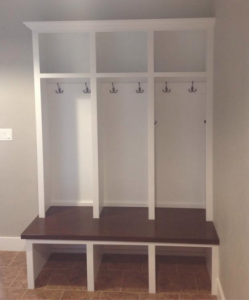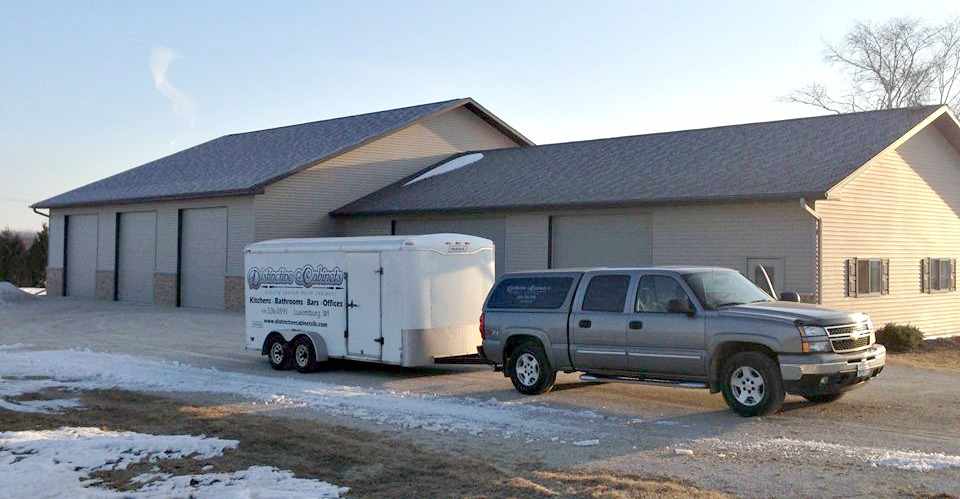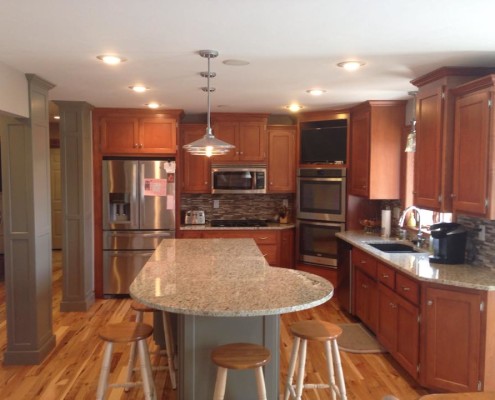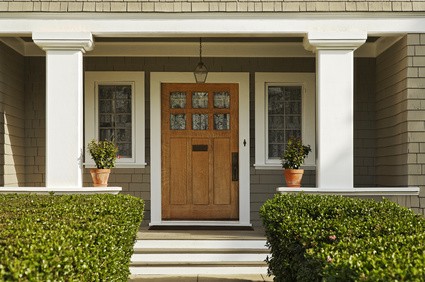Green Bay is blessed with fertile soil and 4 beautiful seasons, but with the onset of winter, it’s time to harvest your gardens and get the last of what you can from the Farmer’s Market. However if you have a plentiful bounty, you may not be able to eat it all before it starts to spoil. Canning is a great way to preserve your fruits, vegetables, sauces and jams. Follow these steps to end up with a pantry or root cellar chock full of gorgeous jars of fresh produce that will last you through the winter and then some!
Types Of Canning
There are two main types of canning, and which method you use will depend on what it is you are preserving. As a rule of thumb, pressure canning, which uses a pressurized canner, is used for vegetables. For fruits, jams, pickles and sauces, water bath canning is preferred. Always consult your recipe to see what it recommends for pressure canning or water bath, times, and pressure.
Fresh Produce
You always want to start with the freshest picked produce for canning. This will give you the best flavors and textures. If you’re canning sauces or salsas, be sure to can as soon as you are finished making your creation.
Equipment
- Pressure canner/cooker
- Canning jars
- Lids and rings for jars
- Jar lifter
- Towel/Pot holder
- Other pots
Pressure Canning
In order to start pressure canning, you’ll want to fill your pressure canner with 3 quarts of water. You do not need to fill nearly as much as you will if water bath canning as this method is about building up the pressure for heat. You just need enough water to make sure that it does not boil dry. If you have a recipe that calls for long pressure canning you may want to add more water.
Always start with clean jars and lids. Either hand wash with warm soap and water and rinse well, or run through the dishwasher on a hot cycle. When pressure canning you do not need to sterilize since the pressurizing process will do that for you.
Next step is to keep the jars and the seals hot so that when you’re adding the ingredients in, you do not cause dramatic temperature changes. If you washed them in the dishwasher, keep them in with the heated dry on. If you hand washed, place the jars upside down in a large pot with 2 – 3 inches of water, bring to a boil, and then remove the pot from heat. Leave the jars in the water until ready to use each one. If you’re using this method, you must also keep the seals warm. You can use another, smaller pot to heat the seals.
After you have prepared your recipe, fill your jars, using a funnel if necessary. After your jar is filled, wipe the rim of the jar with a clean cloth or tea towel to make sure everything will seal properly.
Place your seal and then ring on the jar and just finger tighten. You do not need to over tighten as they will seal themselves.
Your pressure canner should have a rack on the bottom. Cans should never sit directly on the bottom of the pot, and never be touching one another. This may take some time to get everything situated properly but it is necessary for the circulation of water and steam.
After everything is set, place your lid on your pressure canner, but with the steam vent/gauge hole open. Bring the water to a boil and let it steam for 10 minutes. After that time, close the vent or add your gauge weight and let it come to pressure. Once it comes to the pressure that the recipe calls for, that is when you start your timer. In order to maintain the pressure called for, you will need to adjust your heat, so don’t walk away from the kitchen! You do not want the pressure to dip below what is called for in the recipe you are making.
When the time is up, turn off the heat. Do not vent or try to cool or open. You want the pressure to drop to 0 by itself. This will take some time but it is a necessary part of the canning process to make sure your food will be safe to cellar.
Once the pressure is at 0, you can open the canner. Using your jar lifter, pull your jars and either set on a towel or a wooden cutting board.
This is when patience sets in, but you can finally leave the kitchen. Each jar needs to stay still to cool on its own. As they all cool, you will hear the “pop” of the lid sealing. This means your jar is sealed properly! If, after several hours any jars have not sealed, the food is still safe to eat if you refrigerate it right away and eat it within several days, depending on what the product is.
After everything is cooled to room temperature, make sure to label label label! While you may know what everything is right now, that may not always be the case. Either on the lid, bottom, side, or wherever works best for you, write the contents of the jar and the date.
You’re now ready to store!
Water Bath Canning/Boiling Canning
Most of the steps are the same as pressure canning, however it is used for delicate products such as apple sauce or pickles, that cannot handle the high heat or pressure canning.
As before, you always want to start with clean jars and lids and keep them warm in the same manner. One difference however is that you may need to sterilize your jars. If the recipe you are preparing calls for less than a 10 minute boil, then your jars will need to be sterilized beforehand.
To sterilize your jars, place in a large pot of water (always with a rack on the bottom), cover with water by two inches, and boil for 10 minutes. Turn the heat off and leave the jars in the water until ready to use each one. Empty the hot water just before filling with your jams or fruit.
Once your jars are filled and sealed, place in the canner or a large pot with a rack on the bottom. Add hot water until the jars are covered by 2 inches, again making sure the jars are not touching.
Bring the water to a boil, then start your timer for as long as your recipe calls for. Check occasionally to make sure your pot is maintaining a boil. Once finished, let the water cool for a few minutes, then remove the jars from the water, again placing on a towel or board.
The cooling process is the same, waiting for them to cool, pop, return to room temperature, and label. Now you have beautiful fruits for over ice cream or for pies!
Ideas For Wisconsin Fall Canning
Canning end of summer and fall vegetables means you have fresh tasting produce on your hands all winter without having to pay at the store. Some of the easiest and most abundant ideas for a Green Bay fall garden are:
- Apple Sauce
- Apple Pie Filling
- Tomato Sauce
- Salsa
- Pickles
- Halved Pears
- Green Beans
- Rhubarb Sauce
- Pickled Spicy Peppers
Pantry or Cellar Tips
- Custom cabinetry can be made for existing spaces in your home that are specific for your needs and amount of canning you do. Whether in a pantry or basement, there are many options to fit your style.
- Always label your jars! There are templates you can download if you want everything to look uniform, or a marker on the jar always works and can wash off when you are done.
- For organization, label your shelves with what types of goods are on them. Keep vegetables, fruits, jams, sauces, pickles and salsas in designated areas so that you know what you have available at a glance.
- If you have more than one season of canning, move the older jars to the front when adding the new batch. This will ensure that you don’t end up with that 5 year old jar in the back you forgot about.
- For safety, a thin board across the bottom front of each shelf can keep your kids (or you) from accidentally pulling out more jars than anticipated or having one land on your foot!
Canning is a great way to spend time with your family, both picking the produce, making the recipes and doing the canning itself. Have fun with it and you’ll reap the (delicious) rewards for months to come!
 Keeping your home tidy can be difficult under the best of circumstances, especially when you have kids. Whether in your front entryway, mudroom or laundry area, custom built locker cabinets can give you the storage you need to keep everything neatly organized without taking up precious space.
Keeping your home tidy can be difficult under the best of circumstances, especially when you have kids. Whether in your front entryway, mudroom or laundry area, custom built locker cabinets can give you the storage you need to keep everything neatly organized without taking up precious space.
 Green Bay winters can be brutal. Averaging almost 46 inches of snow each winter, it is important to take steps to avoid any mid-winter problems, and to avoid term damage to your home. Use these tips from Distinctive Cabinets to lower your winter energy bills and keep you and your family cozy this winter season.
Green Bay winters can be brutal. Averaging almost 46 inches of snow each winter, it is important to take steps to avoid any mid-winter problems, and to avoid term damage to your home. Use these tips from Distinctive Cabinets to lower your winter energy bills and keep you and your family cozy this winter season. Playroom storage is not only functional, but can be fun and creative as well. There are many options depending on your space, but one thing is sure: keeping an organized play space will make your home feel less like a disaster area.
Playroom storage is not only functional, but can be fun and creative as well. There are many options depending on your space, but one thing is sure: keeping an organized play space will make your home feel less like a disaster area. When planning a kitchen re-do or just a facelift, one thing that needs to be considered is the style of countertops you’d like. However, there are several types, each having their own unique characteristics. Below we’ll break down the basics of different materials for countertops to help you better decide what is best for your home, budget and lifestyle.
When planning a kitchen re-do or just a facelift, one thing that needs to be considered is the style of countertops you’d like. However, there are several types, each having their own unique characteristics. Below we’ll break down the basics of different materials for countertops to help you better decide what is best for your home, budget and lifestyle.